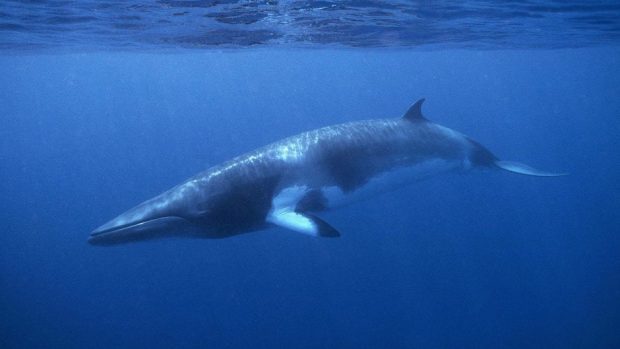The sound of a the minke whale has been recorded for the first time off Scotland’s coast.
Marine mammal researchers at the Scottish Association for Marine Science (SAMS) and Marine Scotland Science (MSS) have recorded the sounds of minke whales as they seek to learn more about the unique creatures.
Their findings, which are included in a paper published in the journal Scientific Reports, were drawn from data collected by MSS, as part of the East Coast Marine Mammal Acoustic Study (ECOMMAS) array of underwater sound recorders, a long term Scottish Government monitoring project.
Although ECOMMAS was developed primarily to monitor the east of Scotland bottlenose dolphin population, SAMS marine ecologist Dr Denise Risch used software she and colleagues from Cornell University, New York, developed, to pick out the minke whale’s underwater sounds, known as pulse trains, from two years’ worth of recordings.
>> Keep up to date with the latest news with The P&J newsletter
Dr Risch said: “Although minke whales are often seen around Scotland, they have so far rarely been recorded acoustically.
“Their calls are produced at lower frequencies compared to those of other species like dolphins, which makes them difficult to record from moving platforms, such as boats.
“By using static underwater recorders, the MSS team were able to record minke whale sounds near to the Scottish east coast, which is really exciting.
“To get a better idea of how animals use these sounds and how we can use them to assess populations, we need more year-round recordings further from shore because low frequencies do not travel well in shallow waters.”
Dr Risch, who has also studied Minke whales off the east coast of North America and Antarctica, added: “Acoustically, the Minke populations across the globe are very different.
“They have very pronounced ‘accents’ based on where they are in the world.
“We’ve studies the humpback whale song for the past 40 years but the minke whale sounds across the world were described relatively late, which just adds to its mystery.
“There is a lot we still have to learn but what we do know about the minke whale is fascinating.”
Dr Risch will now use the same methodology to monitor minke whales on the west coast of Scotland, as part of the COMPASS project.
Environment Secretary Roseanna Cunningham said: “This exciting study highlights how we might use acoustic monitoring to study the presence and distribution of whales in Scottish waters.
“It is also testament to the excellent collaboration between Marine Scotland Science and SAMS that builds on international research in the US.”










